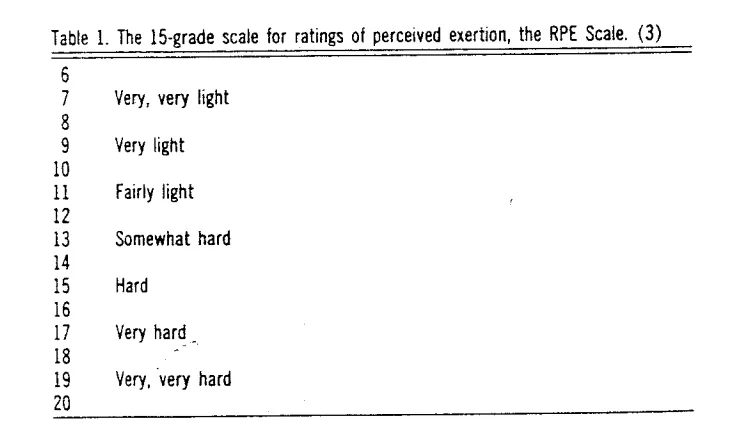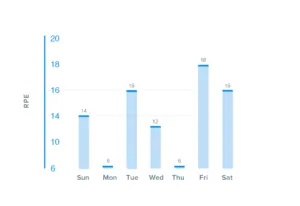Topics
- Article
- Strain
Overview of the Borg Scale of Perceived Exertion

Below we’ll detail exactly what the Borg RPE Scale is, where it came from, and how it can be used as a valuable training tool.
What Is the Borg RPE Scale?
How do you know if you’re working out too hard, or not pushing yourself hard enough? A metric commonly used by coaches, athletes and trainers to track the intensity of exercise is the Borg Rating of Perceived Exertion (RPE) Scale, or Borg Scale for short.
Origin of the Borg RPE Scale
Swedish professor Gunnar Borg first introduced the concept of perceived exertion in the 1960s. Simply put, perceived exertion is how hard you believe your body is working at any given time. Borg continued to study it through the 1970s, and in 1982 he published a paper containing his RPE scale. Here is the original RPE chart that appeared in that paper:

How Does it Work?
The Borg Scale asks you to rate your level of perceived exertion during any activity from 6-20, with 6 being no effort at all and 20 being your all-out max. What number best describes your effort? Your RPE is defined by several things you experience while exercising, including increased heart rate, faster breathing, sweating and overall fatigue. It’s important to focus on the combination of everything and do your best to disregard any one specific factor, like pain in a joint or muscle. Why is it 6-20? Borg developed his RPE scale to represent an estimate of what your heart rate is when you multiply the number by 10. For example, if you go for a light jog and rate your exertion a 13, your heart rate is likely in the neighborhood of 130.
Training with the Borg Scale
Borg’s RPE scale was not intended simply for athletics. Among other things, it can be quite useful in terms of occupational health and safety for workers performing physical labor. However, it has become most popular in the fields of sports science and sports medicine, and is often used to help put together training regimens. Here's an example of how an athlete might plan a week's worth of exertion while training for a big event. In this case, Monday and Thursday are the rest days, with Friday being the day to really push it:

What makes the Borg Scale particularly effective for monitoring exercise intensity is that it’s a relative scale applied specifically to you. To measure your training progress, use the Borg Scale to gauge how much effort it takes to perform a certain workout or activity. As your fitness improves, your RPE for that activity will decrease, a sign you can make your workout more challenging.
Go Next Level with WHOOP
Using a proprietary algorithm inspired by the Borg Scale, WHOOP quantifies the strain your body takes on each day, and during your individual workouts. Every morning, our recovery metric tells you how prepared your body is to take on strain so you can avoid overtraining. And with the new Strain Target, you’ll know in real time as you’re working out whether to push harder, if you’ve reached your strain goal, or when you’re overdoing it.